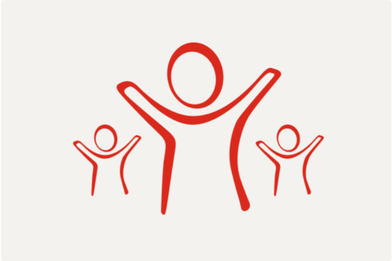World is more than 450 years off target from meeting child poverty promise
The world is 452 years away from delivering on the promise of ending extreme child poverty, new figures commissioned by Save the Children show. This timescale of four and half centuries is as remote from today as the reign of the English Queen Elizabeth I.
World leaders pledged to bring an end to extreme poverty by 2030 in the Sustainable Development Goals agreed at the UN in New York, in 2015. But at the current rate of progress, the last child projected to leave extreme poverty will not do so until 2482 – 18 generations later than the agreed global target.
This child will live in sub-Saharan Africa, a region which, by 2030, is expected to account for almost 90% of the 167 million children globally living on less than $1.90 a day, the threshold for measuring extreme poverty.
The stark findings come ahead of this week’s annual gathering of world leaders in Davos, Switzerland, at the World Economic Forum, where the theme is ‘Responsive and Responsible Leadership’.
The need for an intensified focus on the Sustainable Development Goals, including the eradication of poverty, is expected to be an important part of the discussions ahead of a year of political and economic uncertainty.
Helle Thorning-Schmidt, CEO of the Save the Children International and a co-chair of this year’s World Economic Forum meeting in Davos, said: “It is unforgiveable that at the current rate of progress, the world will not eradicate extreme poverty for eighteen generations – thereby breaking its promise to millions of vulnerable children.
“In Davos next week, I will be making clear to world leaders that if we are to embody responsible leadership, we must reach every last child. We can and must do better – including by expanding access to good quality health and education, and ensuring that governments commit money within their national budgets to reducing child poverty. The world has already approved a blueprint for solving this crisis, so now we must get on with it.
“Child poverty is a vicious cycle. Being poor makes it less likely that you’ll learn in school, more likely that you’ll fall ill, and exposes children to much higher risks of early marriage, child labour and exploitation – disadvantages that millions of children carry into adulthood and pass on to the next generation. This is both unfair and hugely costly for societies. By making smart investments now, we can break the inter-generational poverty trap, and lay the foundations for a more stable and prosperous world. In an age of unprecedented resources and know-how, there is no excuse for any child to grow up in poverty.”
More than three-quarters of a billion (767 million) people were estimated by the World Bank to be extremely poor in 2013, of which 385 million (half) are children. Because poorer families have more children, children are twice as likely as adults to live in extreme poverty – with extreme poverty rates of 19.5% for children, against 9.2% for adults.
Poor children are more likely to die before the age of five, and to suffer from stunting and malnutrition. They’re less likely to go to school, complete school or learn in school. They’re also more likely to be forced into harmful work and early and forced marriage, and to be exploited through prostitution and trafficking. This has a long-term impact on their development and also means that their own children are more likely to be poor.
WE STAND SIDE BY SIDE WITH CHILDREN IN THE WORLD'S TOUGHEST PLACES.
For information or interviews, please contact:
Natasha Dos Santos
Email: natasha.dossantos@savethechildren.org
Tel: +44 7787 191 987
For media interviews with Helle Thorning-Schmidt in Davos next week, please contact:
Helena Dollimore
Email: Helena.dollimore@savethechildren.org
Tel: +44 7342 996954
Notes to Editors
- The figures commissioned by Save the Children are from the Overseas Development Institute (ODI). They are based on extreme poverty estimates and a 2030 scenario from the World Bank, and demographic data.
- ‘167 million children living in extreme poverty by 2030’ sourced from this report: https://www.odi.org/publications/10520-child-poverty-inequality-and-demography
- Extreme child poverty is defined as a child living in a household with an income below the equivalent $1.90 a day (latest World Bank benchmark).
- The vast majority of extremely poor children are in Sub-Saharan Africa (53% of global total in 2012) and South Asia (32%).
- Save the Children works with partners and governments to tackle poverty by providing families and children with cash transfers, services (like education and healthcare) and goods (like school kits). We work with families to ensure they have the means to buy basics such as food and clothes, and the ability to make a sustainable living and provide for their families. We also work with children to build their skills and provide them with opportunities to find decent work, while working with governments to ensure they prioritise children and take concrete steps to reduce child poverty.

.jpg-ch11029384.jpg/h6y2riw1t1308x50qu0mva17r0cn21ka.jpg?g=top&w=392&h=261&format=webp&itok=CjRzlLzV)
